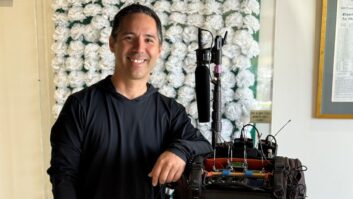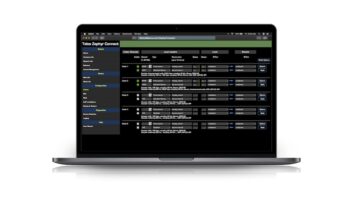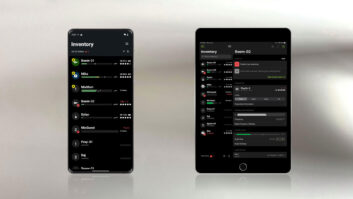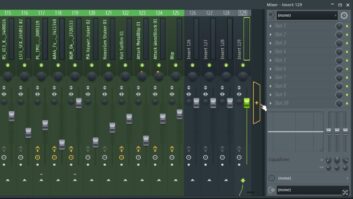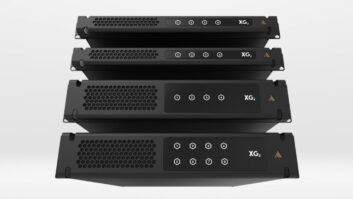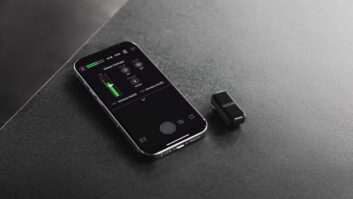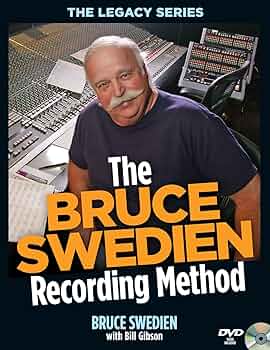 Legendary recording engineer Bruce Swedien might be best known for his work with Michael Jackson—he recorded all of the late singer’s prime solo work, including the best-selling album of all-time, Thriller—but to stop there would sell him short. Other classics to his credit include songs as varied as Frankie Valli and the Four Seasons’ “Big Girls Don’t Cry” and George Benson’s “Give Me The Night.”
Legendary recording engineer Bruce Swedien might be best known for his work with Michael Jackson—he recorded all of the late singer’s prime solo work, including the best-selling album of all-time, Thriller—but to stop there would sell him short. Other classics to his credit include songs as varied as Frankie Valli and the Four Seasons’ “Big Girls Don’t Cry” and George Benson’s “Give Me The Night.”
Moreover, the man’s worked with Herbie Hancock, Paul McCartney, Duke Ellington, Dizzy Gillespie, Barbra Streisand, J. Lo, Diana Ross, Lionel Hampton, Mick Jagger, Sarah Vaughn, Donna Summer, Count Basie, Bob Newhart, Chaka Khan, and literally dozens of other household names. All that led to five Grammy wins and 13 nominations, making the King of Pop just the tip of the iceberg when it comes to Swedien’s career.
With all that experience comes a heck of a lot of knowledge, and that in turn led Swedien to write three books to date—Make Mine Music (2003); In the Studio with Michael Jackson (2009); and his latest book/DVD set, The Bruce Swedien Recording Method, which we chatted about in this interview during the recent AES Convention.
PSN: You’ve already written two well-received books; what was the impetus behind this one?
SWEDIEN: Mainly what I wanted to do was to have more details about what my motivations really are in this book, and the top thing is: Music First. Everybody thinks that you listen, that you learn how to make records by listening to records, but you don’t. You have to go out and hear live music in a good acoustic situation, and from there, you build a benchmark for your ear.
PSN: So you really know what that instrument sounds like.
SWEDIEN: Yes. You have to hear live music; it has to start there. You can’t learn how to make records by listening to other people’s records, because then you’ll never be able to express yourself. You’ll always have that other thing; it will be too much of an influence.
PSN: So the book was an opportunity to sort of bring together truths like this.
SWEDIEN: Yeah, if you look through the book, it’s pretty self-evident.
PSN: With many of the larger studios going away, a lot of engineers now don’t get the opportunity to apprentice. Is a book like this sort of an opportunity to get at least a little bit of that experience?
SWEDIEN: Yes, I think this book offers the reader a real chance to understand why I record and mix the way I do. Sort of a mentoring situation. My mentor was Bill Putnam in Chicago. He was marvelous. It just went on, you know, and of course I was recording all the big bands at that point in time: Stan Kenton, Count Basie, Duke Ellington, yeah, everybody.
PSN: So those early recordings, I suppose a lot of folks here at an event like AES would feel that they were made with rather limited equipment, but I wonder if that helped to some extent—it’s possible to have too many options and too many choices.
SWEDIEN: Yeah, unless you’re equipped with a way to evaluate what they’ll do for the music. It’s all about the music; that’s the only thing. You’ve got to try to learn to make the best statement for the music that you can.
PSN: One of the most controversial parts of your book are your comments about compression.
SWEDIEN: I hate compression. It should never have been invented. Automatic gain control is a crutch and it’s definitely not good for the music.
PSN: And gear is only part of the story when it comes to recording, because there’s the performance and also something as simple as building that relationship with the producer and the artist in order to have them trust you.
SWEDIEN: I’ve been very fortunate in working with the best people, and I was there because they wanted me to be there.
PSN: Certainly a lot of the records that you made, they sounded very current when they came out, but a lot of them also have a real lasting quality where they don’t necessarily get dated.
SWEDIEN: If you’re going to record and mix records like that, you have to, maybe I’ve said this too often, but you have to know what music sounds like. If you don’t know that, nobody cares what records sound like, not really. If you can make a statement with your record that is relatable and current, it’s going to last. I think that’s evident in the recordings I did with Michael.

